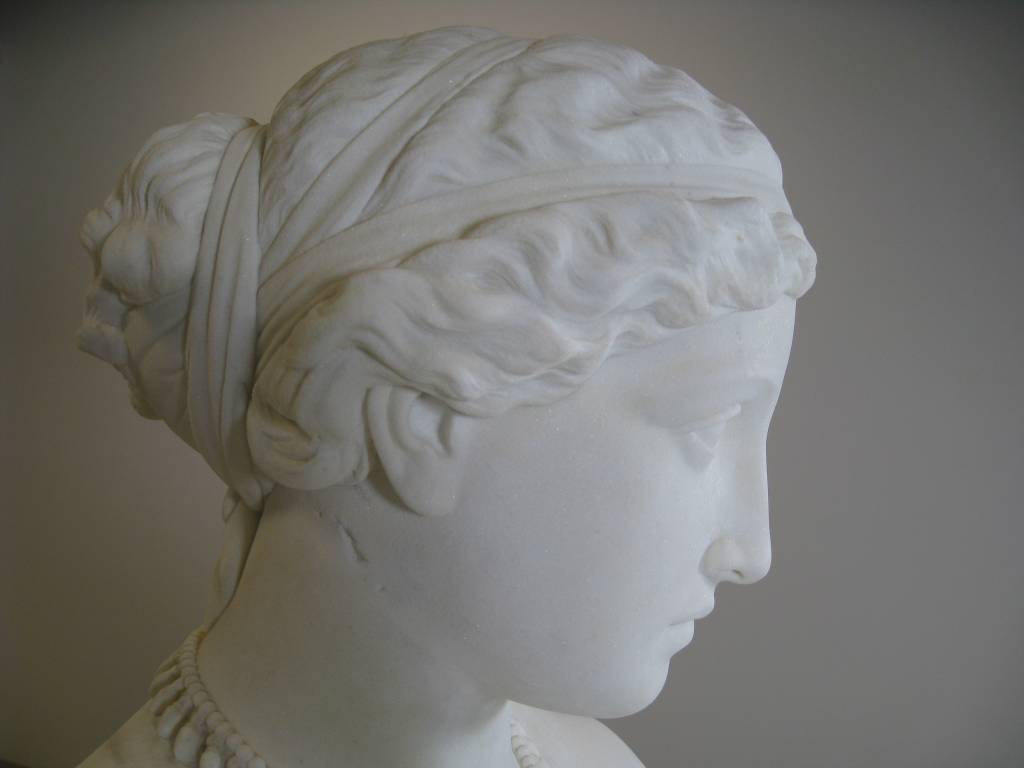To me, one of the most fascinating careers in the art world is conservation: a profession devoted to the preservation of our tangible cultural heritage. Conservators have the very important role of examining, documenting, treating, and preparing preventative measures to best care for art.
Conservation as a distinct field of study initially developed in Germany, where in 1888 Friedrich Rathgen became the first chemist to be employed by a museum. He not only developed a scientific approach to the care of objects in the collections, but disseminated this approach by publishing a “Handbook of Conservation” in 1898.
Some time ago, Crystal Bridges acquired a marble sculpture by William Wetmore-Story depicting Sappho, the Greek lyric poet. The figure is carved from a single piece of Italian carrara marble; the chair and base were carved in sections and joined together. Impressive!
The sculpture was in pretty good shape considering the 1867 date of creation! Unfortunately, poor Sappho had been installed outside for some time in her past and had been attacked by rainwater, airborne pollutants, and handling. There was also evidence of two different types of epoxy used to fill the veins and pits during past repairs. This epoxy had yellowed and was visually disfiguring. Sappho was in desperate need of a makeover!
We were more than happy to set up a time for a conservator to assess the sculpture’s condition and propose treatment for cleaning and improvement of the old repairs. Paula Hobart is an objects conservator who lives in Kansas City and works in private practice (Hobart Conservation, LLC) specializing in objects conservation. Paula received her Masters of Arts and Certificate of Advanced Studies in Art Conservation from Buffalo State College in 2005.
Hobart recently treated the sculpture in two phases. The first phase involved overall cleaning to remove accumulated dirt and grime. Cleaning was done systematically, working from top to bottom using a combination of steam and a mild detergent. The old repairs were also removed at this time. Phase two of the treatment involved cosmetic repairs to visually integrate sections that were missing. New fills were done using a wax/resin mixture that closely matched the translucency and color of the marble.
The results were remarkable.










